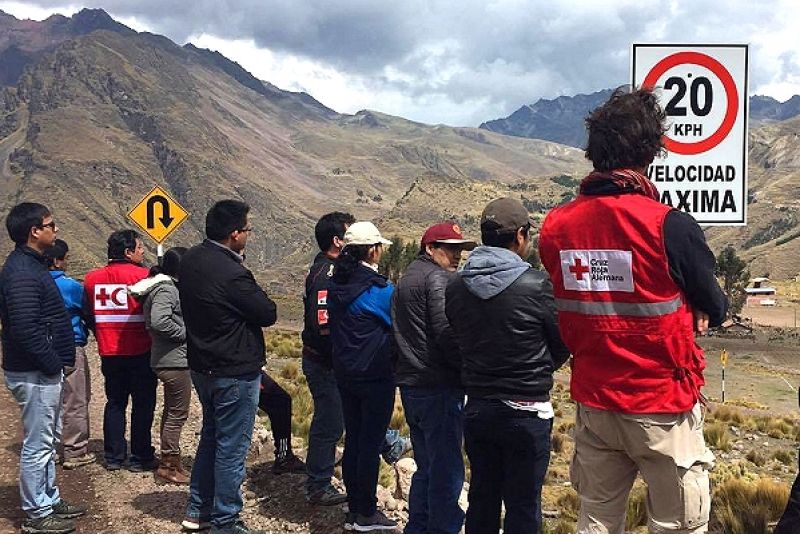
‘Climathon’ workshop in Peru charts risk scenarios across multiple hazards

The forecast-based financing (FbF) project in Peru – implemented by the Peruvian Red Cross and supported by the German Federal Foreign Office and the German Red Cross – last month convened an inter-agency workshop to discuss ‘climate-risk scenarios’.
Peruvian experts from a wide variety of professional backgrounds – including (alphabetically) agriculture, civil defence, geology, health, meteorology and water supply – also took part.
Called a ‘Climathon’, the event was held over three days from 23–25 November in the historic town of Pisac, in the Sacred Valley of the Incas, in the Andean Cusco region.
As well as the Red Cross, Peru’s lead government agency on disaster risk management, CENEPRED, was among agencies taking part, as well as the national meteorological service, SENAMHI, the national geological institute, INGEMET, the local NGO PREDES, and the German Welthungerhilfe organization.
The Climathon applied scenarios for cold waves, landslides and floods at, respectively, ‘macro’ level in the southern Andes, ‘micro’ district level, and the Amazon river basin.
The workshop “highlighted the importance of developing climate-risk scenarios on sub-national scales”, according to Marycruz Flores Vila, an evaluation specialist quoted on the CENEPRED website.
Synergies
The Climathon workshop was intended to contribute to strengthening the national capacity for analysing climate risks and developing risk scenarios, and generally create evidence-based synergies among the agencies that between them address the full range of climate-related hazards in Peru.
Representing the IFRC was its regional disaster management coordinator, Pabel Angeles, who highlighted the importance of early response based on climate forecasts, alongside previous work on standardizing risk scenarios.
This would help “prepare vulnerable communities before imminent climate-related danger and reduce impacts and damage at family level”.
Climate-risk scenarios are key to FbF pilot projects in Peru, vital for designing ‘standard operating procedures’ and forecast-based actions, determining danger levels, and linking FbF to early warning.
Risk scenarios from the Pisac workshop will be presented to the leaderships of the various agencies involved at a high-level meeting in January to help inform decision- makers and disaster risk management agencies.
Workshop participants on a field trip to an area of Cusco region at high risk for landslides.
(Photo: Climate Centre)